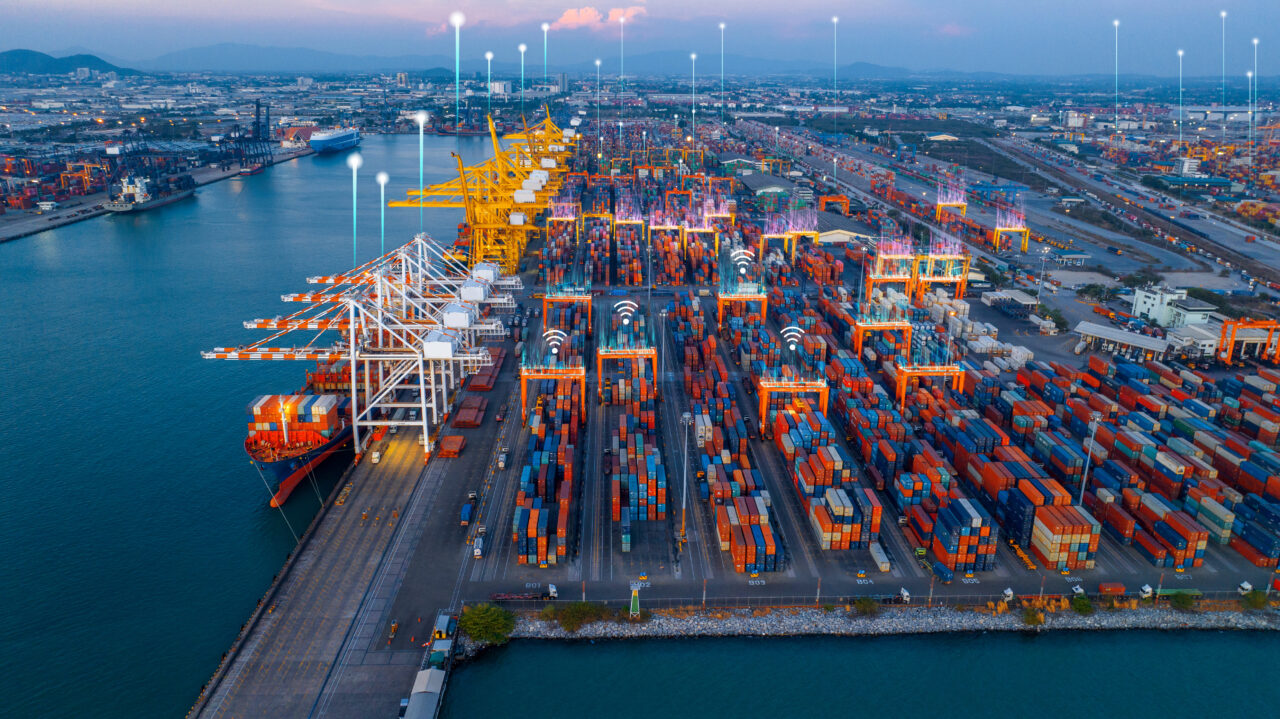Container ports are the lifelines of global trade, facilitating the movement of goods across continents and oceans. As global trade volumes increase, the need for efficient, technologically advanced port operations becomes ever more critical. Connectivity stands at the heart of these advancements, enabling seamless integration of technologies that enhance port efficiency, safety, and sustainability. This article explores the pivotal role of connectivity in driving technological innovations at container ports.
The Role of Connectivity in Modern Ports
Connectivity is the backbone of technological advancements in container ports. It ensures that all systems, devices, and stakeholders are interlinked, facilitating smooth and efficient operations. Effective connectivity helps in real-time data exchange, enhances decision-making processes, and streamlines logistics, making ports smarter and more responsive to the demands of global trade.
Integration of Systems
Modern container ports are increasingly adopting integrated systems that connect various components of port operations. This integration includes automated cargo handling systems, terminal operating systems (TOS), and port community systems (PCS). By linking these systems, ports can achieve better coordination, reduce bottlenecks, and enhance the overall efficiency of cargo handling and storage.
Real-time Data Exchange
Real-time data exchange is crucial for optimising port operations. Sensors, GPS devices, and IoT technology collect and transmit data on cargo location, equipment status, and environmental conditions. This data is accessible to all stakeholders via centralised platforms, enabling timely decision-making and reducing delays. Real-time tracking also enhances security, allowing for immediate response to any anomalies or threats.
Technological Innovations Driven by Connectivity
The push towards advanced technologies in container ports is largely driven by the need for better connectivity. Here are some key technological innovations that are transforming port operations:
Automation and Robotics
Automation is revolutionising container port operations, reducing reliance on manual labour and increasing operational efficiency. Automated cranes, guided vehicles, and robotic systems are now standard in many ports. These technologies are interconnected with central control systems, allowing for precise, automated cargo handling and reducing human error and operational costs.
Internet of Things (IoT)
IoT technology connects a vast network of devices and sensors across the port, providing critical data for monitoring and management. IoT-enabled devices track container conditions, monitor equipment performance, and gather environmental data. This connectivity facilitates predictive maintenance, enhances cargo security, and improves overall operational efficiency.
Blockchain Technology
Blockchain technology offers a secure and transparent way to manage transactions and data exchange in ports. By creating an immutable ledger, blockchain reduces the risk of fraud and streamlines processes such as customs clearance, documentation, and payment settlements. This transparency fosters trust among stakeholders and accelerates the flow of goods through the port.
Artificial Intelligence and Machine Learning
AI and machine learning are at the forefront of port innovation, enhancing decision-making and operational efficiency. Algorithms analyse vast amounts of data to predict demand, optimise logistics, and manage resources. AI-powered systems improve berth allocation, cargo handling, and maintenance scheduling, reducing downtime and enhancing productivity.
Enhancing Sustainability Through Connectivity
Sustainability is a key focus for modern container ports, and connectivity plays a crucial role in promoting green practices and reducing environmental impact.
Energy Management Systems
Connected energy management systems optimise power consumption across port facilities. These systems integrate renewable energy sources, such as solar and wind power, with traditional energy grids, reducing reliance on fossil fuels and lowering greenhouse gas emissions. Smart grids and energy storage solutions ensure efficient energy use and support sustainable port operations.
Emission Control and Monitoring
Connectivity enables real-time monitoring of emissions from ships and port equipment. Advanced monitoring systems track pollutants and ensure compliance with environmental regulations. Technologies such as scrubbers and catalytic converters are integrated with port systems to reduce emissions from vessels and equipment, contributing to cleaner air and a healthier environment.
Smart Shore Power Systems
Smart shore power systems allow ships to connect to the local power grid while docked, eliminating the need for auxiliary engines. This reduces emissions and noise pollution, enhancing the port’s environmental footprint. These systems are interconnected with port management systems, ensuring seamless integration and efficient power usage.
Conclusion
Connectivity is the linchpin of technological advancements in container ports. By enabling real-time data exchange, integrating systems, and supporting cutting-edge technologies, connectivity enhances the efficiency, safety, and sustainability of port operations. As the global trade landscape continues to evolve, the importance of robust connectivity in driving innovation and maintaining competitiveness in the market cannot be overstated.
#ContainerPorts #PortConnectivity #SmartPorts #IoT #Blockchain #Automation #ArtificialIntelligence #SustainablePorts #GreenTechnology #PortInnovation
